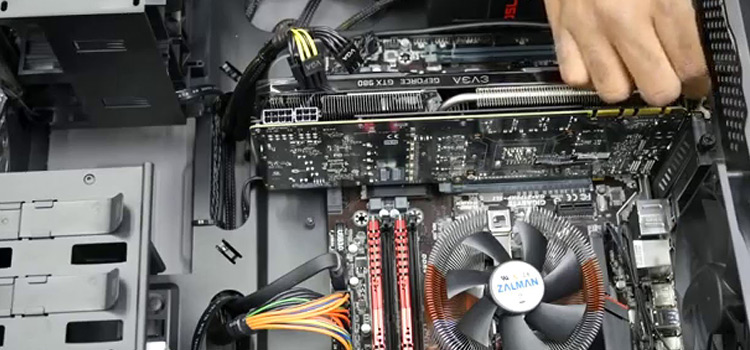Technological Advancements in Root Canal Disinfection
Root canal treatment, while an effective means of eliminating infected dental pulp to save a tooth, has seen relatively few significant advances over the past several decades when compared to other dental procedures. However, the integration of new technologies for disinfection, treatment personalization, procedural improvement, and more are poised to change endodontic standards – drastically improving patient comfort, recovery times, tooth preservation, and long-term oral health.

Evaluating Blue Light Sterilization Systems
Assessing the Efficacy of Photodynamic Therapy
Photodynamic therapy utilizing specialized blue light wavelengths shows significant promise as an alternative root canal disinfection method, with multiple studies demonstrating complete eradication of endodontic bacteria samples after light therapy sessions. As the supporting research and clinical evidence continue to build, adopting photodynamic systems as an adjunct or alternative to standard sodium hypochlorite irrigation looks to enhance treatment efficacy.
Optimizing Light Delivery and Activation
Current challenges with light-based disinfection include difficulty accessing deep canal anatomy with uniform light distribution. Next-generation light delivery methods – such as thin, highly flexible fiber optic cables and beam-splitting optics technology – seek to target light activation and reactive oxygen production in even minute canal spaces, which harbor the potential for lingering infection sources after treatment.
Harnessing AI for Personalized Endodontic Treatment Plans
Algorithm-Based Recommendation of Procedures
The wide variability in canal and root anatomy among patients makes standardized root canal protocols imperfect. Now, AI-assisted procedural planning algorithms can synthesize patient scans, symptom profiles, and medical histories to create tailored endodontic treatment regimens – specifying individualized sequences of irrigation, disinfectants, medication pastes, and obturation materials for superior outcomes. For personalized endodontic care and consultations, you too can consider reaching out to a dentist in Woodruff, SC.
Predictive Analytics for Tooth Viability
Sophisticated machine-learning platforms can ingest complex datasets of signs, symptoms, risk factors, and healing outcomes from thousands of historical root canal cases and identify predictive patterns. With continued use, these AI assistants will determine on a patient-by-patient basis whether root canal therapy or extraction is recommended for optimal long-term tooth viability and oral health.
Overcoming Technological Barriers in Advanced Root Canal Techniques
Addressing the Machine Learning Curve
As physicians integrate more tech-driven diagnostic and procedural enhancements in root canal treatments, overcoming the learning curves associated with new approaches is imperative for effective adoption. Upskilled training programs focused on machine learning (ML) visualization, data usage, automated workflow integration and similar competency development will aid this transition.
Seamless Integration of Robotic Systems and Manual Methods
Robotic root canal preparation tools are growing increasingly sophisticated in their sensing, adaption, and refinement abilities. Yet fully automated canal procedures remain prohibitive. Machine-manual collaborative treatment that applies robotic boring, cleansing, and shaping for the majority of canal access followed by specialized manual apical preparation and obturation offers perhaps the ideal combination of technological precision and physician skill. Constructing integrated procedural interfaces is therefore critical as advanced systems emerge.
The Patient Experience in Tech-Enabled Minimally Invasive Endodontics
Utilizing AR/VR for Enhanced Comfort and Reduced Anxiety
The natural anxieties patients face regarding root canal work can significantly hamper experiences. Virtual reality relaxation environments during procedures have successfully minimized discomfort – and AR goggles projecting patients’ own distracting content represent a further evolution to mitigate common phobias. These complementary experiences stand to benefit all patients undergoing root canal therapy.
Accelerating Healing Through Advanced Visualization
Improved anatomically accurate 3D mapping of canal structures through CBCT imaging and enhanced navigational camera scopes grant better visualization and access to physicians performing procedures. In turn, avoiding unnecessary irritation or removal of healthy tooth structure and cleaner infected tissue debridement arises. Limiting collateral damage via high-resolution imaging techniques translates to faster healing for patients.
Emerging Technologies Propelling Innovation in Endodontic Care
AI-Assisted Diagnosis and Precision Treatment
AI platforms provide a web of interconnected innovations, such as bacteria culture analysis for infection identification, 3D canal modeling for anatomy classification, microscope-robot integrated navigation for ultra-precise instrumentation control, and custom dental implant design if tooth preservation fails. Collectively, these tools usher in an era of precision endodontics – allowing specialists an unprecedented command of information and treatment execution accuracy for saving teeth.
Next-Gen Simulation Labs for Specialist Training
Training in advanced visualization tools, AI interfaces, robotic collaborative systems, and other emerging technologies occurs best through hands-on simulated learning. High-fidelity haptic rendering and virtual patient datasets will enable specialist education on cutting-edge root canal techniques without risk. Multi-user distributed platforms can also connect global practitioners for rapid skill sharing and technique refinement.
Evaluating Long-Term Impacts of High-Tech Root Canal Therapies
Preserving Tooth Integrity Through Nanomaterials
Microscopic adhesive films, mineralizing gels, and cell-guiding biological polymers that facilitate regeneration in cracked, porous or micro-fractured tooth structures post-operatively show promise for long-term tooth preservation after trauma. These tissue-engineering materials leverage bio-mimicking chemistry, manufacturing advancements, and infection-resistant properties promising to maintain desirable clinical outcomes.
Compatibility with Comprehensive Digital Dentistry
Integrating intracanal innovations with larger shifts toward cosmetic enhancement, structure stabilization, and restorative work through ceramic reconstruction, clear aligner orthodontics and full-mouth digital impressions maximizes overall patient benefit. Diagnostic consistency and efficiency gains emerge from managing all data, visualization, and planning through consolidated clinical platforms and advanced manufacturing chains.
Conclusion: Adopting Technologically Advanced Standards in Root Canals
The collective technological breakthroughs emerging in root canal therapy – photodynamic disinfection, AI-assisted planning, VR-enhanced care, nanomaterial stabilization and digital workflow integration – promise a paradigm shift toward minimally invasive precision. By embracing and deploying new standards leveraging cutting-edge innovations, endodontists can propel improved patient experiences, accelerated healing outcomes, and prolonged natural tooth viability.
Key Takeaways: The Future of AI-Assisted Root Canal Treatment
1. Photodynamic light irradiation enables thorough disinfection where standard means cannot reach
2. Algorithmic analysis provides patient-specific procedural recommendations
3. ML tools predict the likelihood of post-op tooth retention or necessary extraction
4. Seamless blended robotic and manual collaboration allows precision canal shaping
5. AR/VR minimizes procedural discomfort; 3D mapping prevents collateral damage
6. Comprehensive platforms consolidate diagnosis, planning, and execution for optimal outcomes
- Evaluating Blue Light Sterilization Systems
- Harnessing AI for Personalized Endodontic Treatment Plans
- The Patient Experience in Tech-Enabled Minimally Invasive Endodontics
- Emerging Technologies Propelling Innovation in Endodontic Care
- Evaluating Long-Term Impacts of High-Tech Root Canal Therapies
- Conclusion: Adopting Technologically Advanced Standards in Root Canals
- Key Takeaways: The Future of AI-Assisted Root Canal Treatment
Subscribe to our newsletter
& plug into
the world of technology





